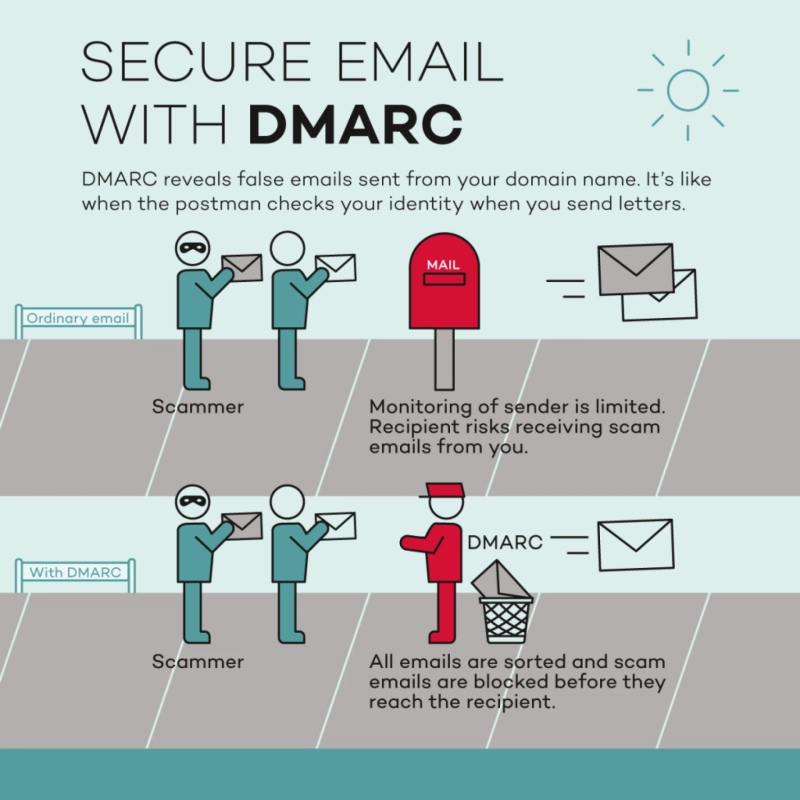You\'ve probably seen the headlines: cyber-attacks and phishing scams are becoming increasingly common. Between 2018 and 2019, Microsoft\'s anti-phishing filters show a monthly rise of up to 44 % in phishing emails received. Major bank brands, payment processors, healthcare providers, e-tailers, and individual customers are all targets of these attacks. In 2019, 55% of email traffic was spam, according to Statista. An email has never been completely safe, despite its importance, ubiquity, and durability. Every year, email fraud company\'s cash millions of dollars throughout the world, and it may permanently damage a company\'s reputation.
New delivery tools have emerged to aid in the protection of brands and consumers, the most significant of which is DMARC (Domain-based Message Authentication, Reporting, & Conformance). DMARC is an open email framework created by the industry group DMARC.org in 2012 to allow domain-level email channel security. It is the only way for email senders (like you!) to tell email receivers (i.e. Outlook, AOL, Yahoo, Gmail) that the emails you are sending are truly from you. It works in conjunction with the more well-known email standards (SPF and DKIM), and it is the only way for email senders (like you!) to tell email receivers (i.e. Outlook, AOL, Yahoo, Gmail) that the emails you are sending are truly from you.Companies who use DMARC see their brand equity maintained, customer support costs related to email fraud reduced, and renewed confidence and engagement in their email channel. Despite the unparalleled insight and brand protection that DMARC offers, not all email marketers have adopted it, and as a result, their bottom lines are hurting.
[caption class="snax-figure" align="aligncenter" width="662"] [/caption]
[/caption]
7 Reasons Why DMARC Can Help Protect Your Brand:
- DMARC is enabled on 70% of the world’s inboxes and has been adopted by the most security-forward brands (i.e. Facebook, Apple, JPMorgan, Chase, and PayPal). By the end of 2019, DMARC.org was tracking ~1.89 million DMARC policies deployed to protect domains.
- DMARC is the only solution that enables Internet-scale email protection and prevents fraudulent use of legitimate brands for email cyberattacks.
- DMARC enables you to authenticate all legitimate email messages and sources for your email-sending domains, including your-company-owned and third-party domains.
- DMARC is designed to fit into your organization’s existing inbound email authentication process and helps email receivers determine if a message “aligns” with what the receiver knows about the sender.
- DMARC allows you to publish an explicit policy that instructs mailbox providers on what to do with email messages that are determined illegitimate. These messages can either be sent to a junk folder or rejected outright, protecting unsuspecting recipients from exposure to attacks.
- DMARC provides you, the domain owner, with regular reports on how your mail domains are being used and how isps are interpreting their authentication records. This domain-level data can help you identify threats against your customers, and it can help you discover legitimate senders of which you are not aware–for instance if other teams/departments are also using the domains.
- DMARC also allows you to receive feedback from global isps regarding any potential misuse of your corporate brand. These misuses can include fraud or phishing for a recipient’s personal information.
You can get unprecedented visibility into the legitimate and fraudulent use of your domains by using DMARC. You can protect your customers, employees, and brands against email-based cybercrime with such visibility. The overall impact of DMARC implementation on businesses is the preservation of brand equity, the elimination of customer support costs related to email fraud, and a renewed trust and engagement in the company\'s email channel.



